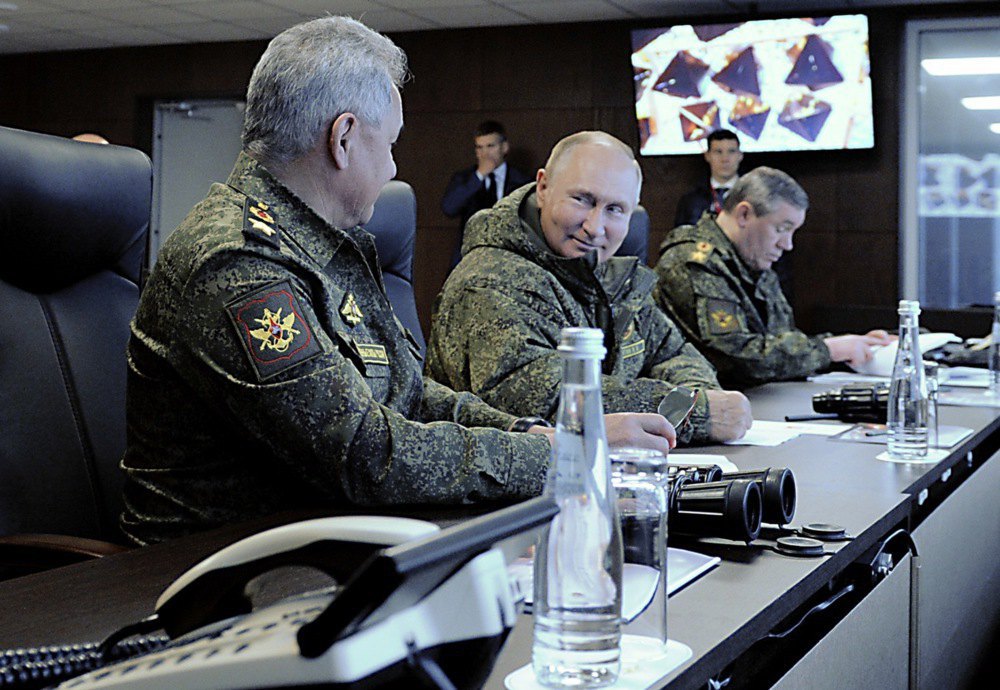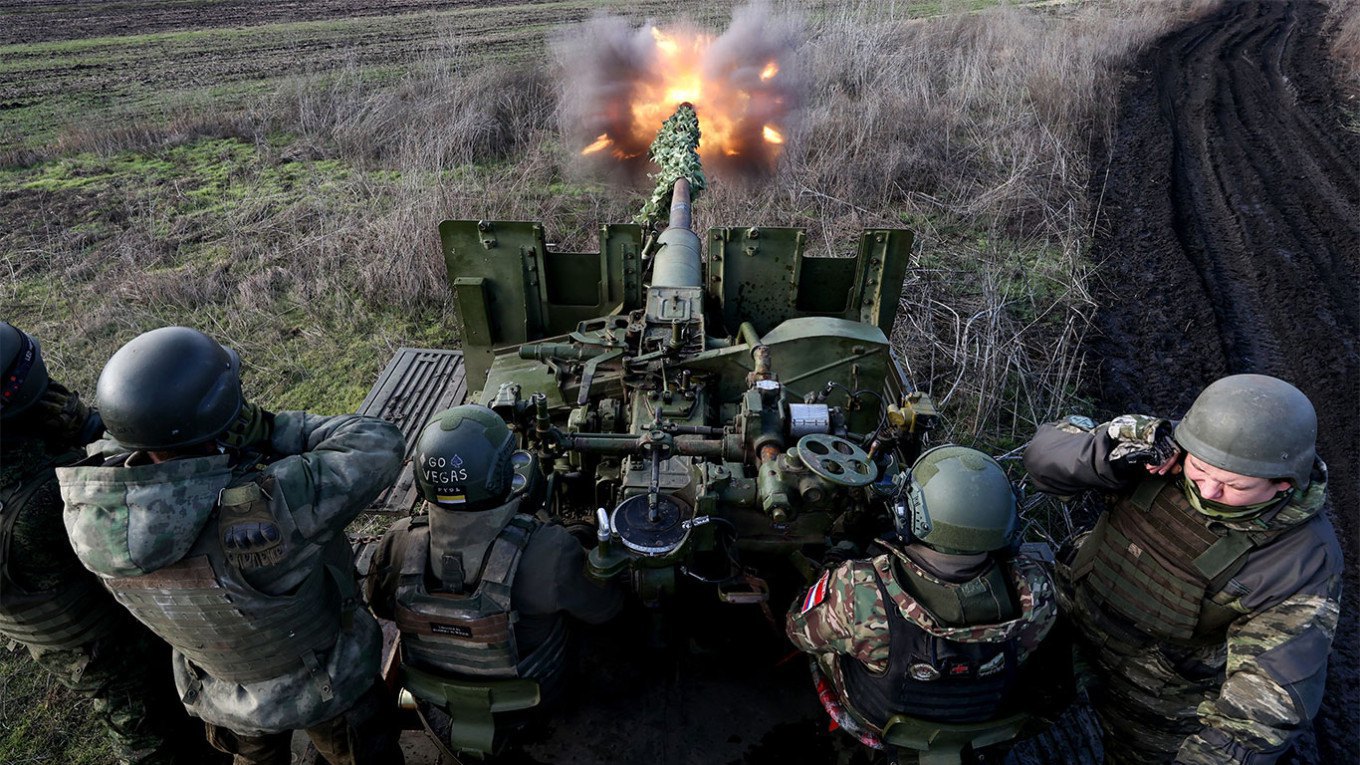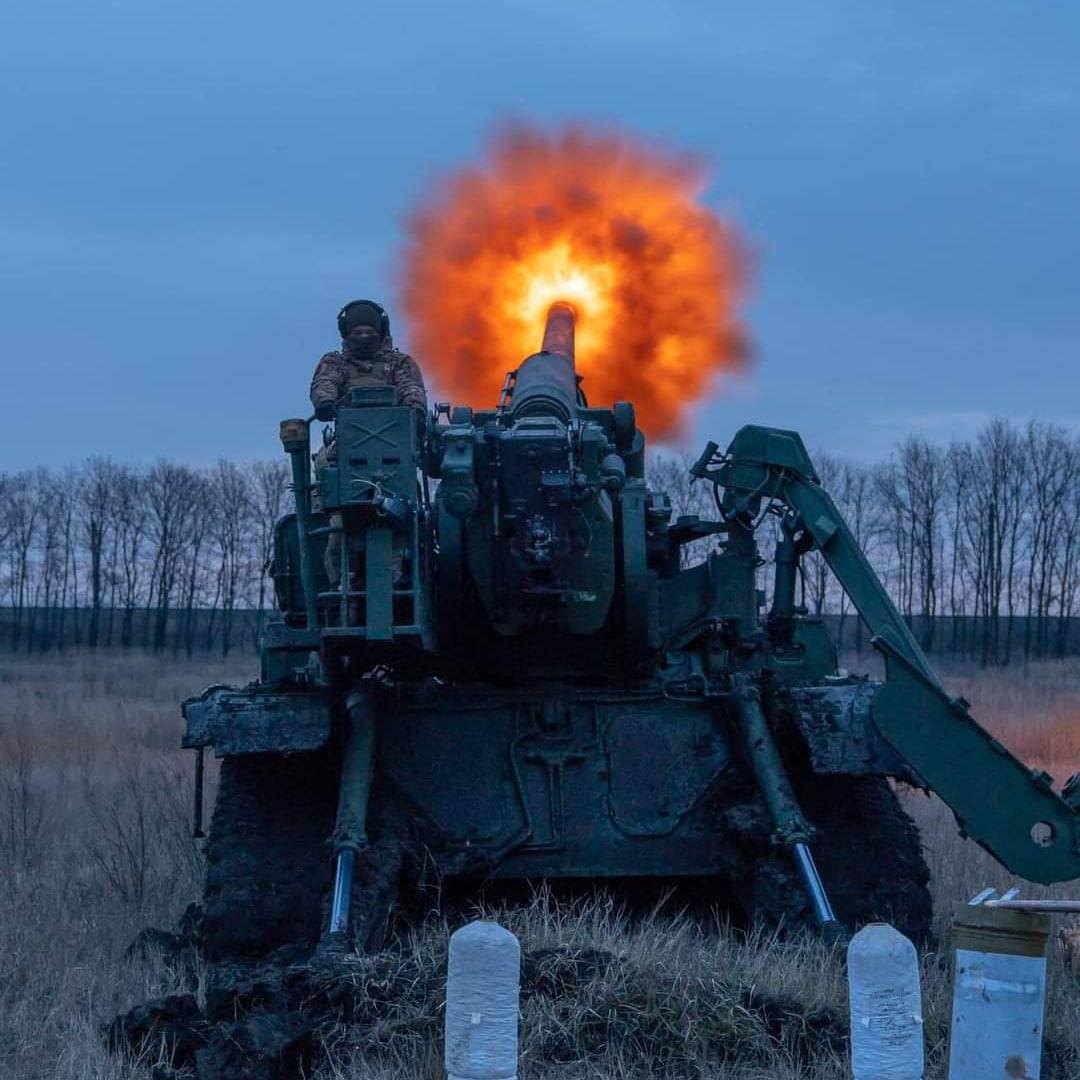
In 2019, the head of the Russian General Staff announced a new (as of that year, of course) military doctrine, which, according to the aggressor, provided for the country’s superiority “over any potential adversary.”
The document’s main points:
- to ensure technical, technological and organisational superiority over any potential enemy;
- it is unlikely that the production of modern weapons will be established in a short period of time after the start of military operations, so everything necessary must be manufactured in the required quantities and delivered to the troops while still in peacetime;
- use the protest potential of the fifth column to destabilise the situation with simultaneous strikes by high-precision weapons on key targets;
- the main focus of military strategy is preparation for war and its conduct by the armed forces;
- asymmetric, political, economic, informational, and other non-military measures are secondary but remain in the arsenal.
The so-called Gerasimov Doctrine of 2013 is much more moderate than the Gerasimov Doctrine 2.0 of 2019.
Russian troops intensified offensive operations across the entire South-Western Theatre of Operations at the end of winter and have been pressing along the entire front line for six months now. The enemy has formed eight salient positions — in the north of the Kharkiv Region, in the Dvorichna area of the Kharkiv Region, in the Borova area of the Kharkiv Region, north of Lyman in the Kharkiv Region, in Chasiv Yar in the Donetsk Region, in Nova Poltavka in the Donetsk Region, in Udachne in the Donetsk Region, and in Tovste in the Donetsk Region. These should be seen as potential springboards for encirclement or envelopment operations, which Russian headquarters are so fond of.
A similar salient is now being formed in the Velykyy Burluk area: the enemy has become noticeably more active in the areas of Vovchansk, Milove, and the Dvorichansky salient. And the directions of the attacks point to Velykyy Burluk.
Such operations reveal the Russians’ intention to force the Defence Forces to retreat from frontline settlements under the threat of encirclement. It seems that the Russian General Staff has developed and is implementing the Gerasimov 3.0 doctrine — the slow encirclement of frontline settlements through offensive operations of a certain scale. Enemy activity at the junction of its South and Centre operational–tactical groups in the Toretsk and Pokrovsk directions at least points to this.

The enemy has not mastered operations involving the widespread use of motorised rifle units, which allow for raids or rapid breakthroughs into operational depth. Three and a half years of war have further impaired the Russia’s ability to conduct combat operations in a unified armoured combat order, partly due to significant losses of armoured vehicles and professional, well–trained military personnel from the pre–war training period.
The Russian military command is making considerable efforts to build up its operational capabilities and continue the game for a long time, as some operations have been going on for years. The Russians have been trying to capture (no longer surround) Kupyansk for at least 18 months and, since 1 July 2024, have captured 454 square kilometres — about 1.2 square kilometres per day.
The squeezing out of Defence Forces units from the eastern bank of the Oskil River in the directions of Borova and Lyman has been ongoing since the end of 2023. The aggressor has advanced approximately 15–17 km west of the Chornyy Zherebets River over the past six months.
The Russians began their offensive in the Toretsk direction in mid–June 2024 and have been trying to expand their advance south and southwest of Kostyantynivka for nine months. These actions are synchronised with Russian efforts south and southwest of Kostyantynivka to encircle Pokrovsk and Myrnohrad. Since 1 November 2024, Russians have captured about 617 square kilometres in the direction of Kostyantynivka and about 1,394 square kilometres in the direction of Pokrovsk — an average of 2.4 square kilometres and 5.5 square kilometres per day, respectively.
Earlier, the Russians used an operational encirclement manoeuvre to capture Vuhledar, Kurakhove and Velyka Novosilka. They are now forming the southern and eastern flanks of the future operation to encircle Novopavlivka. The aggressor’s advance in the western part of Donetsk Region since 2 January 2025 has amounted to approximately 1,057 square kilometres — an average of 5.5 square kilometres per day.
The occupation of 14–15 square kilometres per day over the past six months indicates that Russia is making gains along the entire front line, rather than in two or three operational directions.
The Russian military command intends to use its operational achievements in the western part of Donetsk Region to develop an offensive deep into Dnipropetrovsk and Zaporizhzhya Regions.

The enemy destroyed the defences of the Donetsk operational–tactical Group along the H15 Kurakhove–Zaporizhzhya highway in mid–June 2025, primarily in the area southeast of Novopavlivka, near Bagatyr and Odradne, and south of Novopavlivka, near Komar. During June, the enemy gradually advanced west of Bagatyr and north of Komar — from 14 June to 14 July from Bagatyr to Novokhatske — approximately 20 km (i.e. 670 m per day).
There are many reports of Russian assault groups appearing in the Dnipropetrovsk Region, but the purpose of these movements is either tactical manoeuvring to advance westward towards Velykomykhaylivka and Havrylivka, or a PR stunt to “plant a flag on any farmstead in the Dnipropetrovsk Region and die.”
But all this movement may conceal completely different intentions. The enemy’s Vostok military unit, consisting of four armies, controls the front line from Novopavlivka to the eastern part of Zaporizhzhya Region, creating a wide and relatively even front line near the administrative border of Donetsk, Dnipropetrovsk and Zaporizhzhya Regions in the Malynivka–Zelenyy Hai area. This opens up the possibility of attacking in the direction of Hulyaypole, Velykomykhaylivka and Havrylivka. Otherwise, why did the 40th Marine Brigade and the Rubicon unmanned technology centre arrive here from the very hot Sumy direction?
It is logical to assume that the casuistry with the inclusion of four Regions of Ukraine in the constitution will push the Russians to use their tactical gains in the west of the Donetsk Region to launch an offensive operation in the Pokrovsk direction and advance through the territory of the Dnipropetrovsk Region to the city of Zaporizhzhya. Another way to see AvtoZAZ could be an offensive operation along the H15 Kurakhove–Zaporizhzhya highway, since the Defence Forces’ defensive structures are designed to repel an attack from south to north, not from east to west. But as they said in World War I, “it looked good on paper…”
The Vostok military unit will advance from positions west of Zelenyy Hai and will be forced to cross the Khaychur, Solona, Verkhnya Tersa and Vovcha rivers, cross the T0408 Preobrazhenya–Novomykolayivka and T0401 Pokrovsk–Hulyaypole highways, and capture several cities whose pre–war population is comparable to that of Chasiv Yar, which has been the focus of the 98th Airborne Division since May 2024.

It will not be possible to advance quickly by approximately 150 km from the Novokhatske district to Zaporizhzhya at the current pace of advancement — there are years of fierce fighting ahead.
Another scenario would be to break through to artillery range from Kamyanske, where the 7th Airborne Assault Division is proving successful. It is about 35 km away.
Whatever happens, the Russians will have to chip away at the Ukrainian defences and fight for the city, which has a population of almost a million.
And in any case, it appears they will have to fight in the southern part of the Dnipropetrovsk Region.
Meanwhile, the Defence Forces are counterattacking in key areas of the front, slowing down the enemy and inflicting significant losses on them. A series of such local counterattacks in the Kramatorsk and Pokrovsk directions in February and March 2025 significantly slowed the advance of the Russian troops, who were forced to regroup in these directions. Another series of counterattacks there has already compelled the command of the Centre and South military districts to change their plan to attack Kostyantynivka and begin to bypass the fortress belt from the south–west.
Equally successful counterattacks in the Kupyansk, Lyman and Siversk directions improved the tactical position of Defence Forces units and, in the north of the Sumy Region, practically surrounded the 155th Marine Brigade and the 30th Motorised Rifle Regiment of the 72nd Motorised Rifle Division of the 44th Corps of the enemy.
In the near future, the following should be expected:
- the encirclement of the enemy in the areas of Kindrativka and Oleksiyivka in the Sumy Region;
- developments in the Burulutskyy triangle;
- the enemy military command deciding to launch an offensive on Zaporizhzhya or abandoning this plan.
(Based on materials from the Institute for the Study of War)








